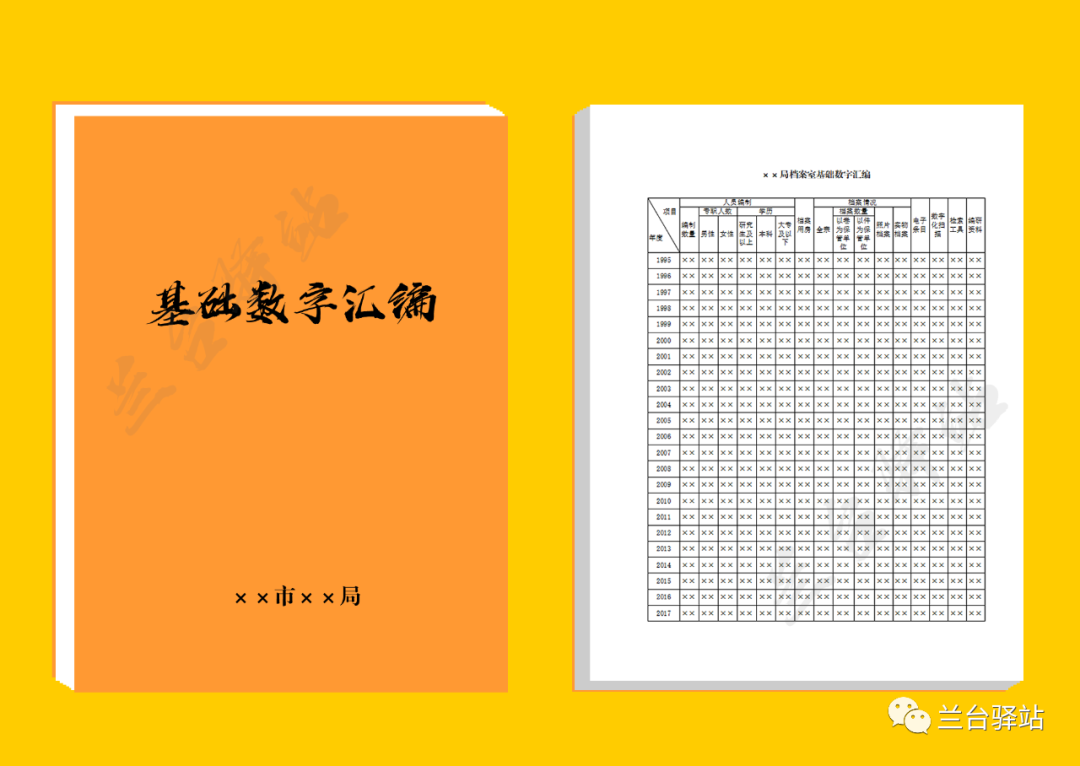01
Guide to Archives
1. What is the Guide to Archives?
2. Name of the Guide to Archives
Example:
J021 ××× City ×× Bureau Guide to Archives 19×~20××
For details on the compilation method, please click the link below!
· Compiling the Guide to Archives
02
Basic Digital Compilation
Basic Digital Compilation, also known as Basic Digital Collection, is a reference material that reflects the basic situation of a region, unit, or a certain aspect through numbers. It is compiled from statistical numbers selected from archival materials based on actual work needs.
Basic Digital Compilation has characteristics such as concentrated content, accurate numbers, brevity, ease of use, and strong persuasiveness. Its role can provide material for users to grasp the situation, study problems, formulate plans, summarize experiences, and serve as a basis and reference for publicity and education.
For details on the compilation method, please click the link below!
· How to write Basic Digital Compilation?

03
Chronicle of Major Events
A Chronicle of Major Events is a reference material that records significant events and important activities that occur within a certain scope in chronological order.
Requirements for Compiling a Chronicle of Major Events:
1. Content is true, viewpoints are correct
The wording and sentences in the Chronicle should reflect the compiler’s understanding, stance, or tendency towards historical facts, and must be scrutinized carefully. The materials used must be true and reliable, with evidence. Content that is not accurate or based on insufficient information is generally not adopted.
2. Highlight major events, omit minor ones
Major events refer to those that have a broad impact, not only significant at the time but also influential for a long time afterward. Important events refer to those that have a significant impact within a certain range and time, having historical value and being worth referencing. Major and important events are relative concepts constrained by time and space.
Every year, many events occur in an organization, but major events are few; most are important or minor events. When compiling a Chronicle, one should distinguish between major and minor events. If everything is recorded, the Chronicle becomes a detailed account and loses its reference value. Only recording major events without including important ones makes the Chronicle content sparse. Recording important events supplements and enhances major events, enriching the content. Avoid including general matters or routine activities in the Chronicle, such as general meetings or routine visits. It is also incorrect to determine major events solely based on leadership activities; all activities of leaders should not be recorded in detail, turning the Chronicle into a record of leadership activities, nor should it be based on personal biases or feelings to select major events.
3. Accurate timing, systematic order, concise
The Chronicle should be recorded chronologically, year by year, month by month, day by day, with each event on a separate line. If the timing is not accurate, efforts should be made to verify it. Events should be logically connected, with clear relationships and organization. The description should be straightforward, avoiding lengthy explanations, but must clearly state the beginning and end of major events and their causes.
For details on the compilation method, please click the link below!
· How to record a Chronicle of Major Events?

04
Organizational Evolution
Organizational Evolution is a reference material that systematically records the organizational structure, personnel composition, and institutional changes of an organization, region, or professional system. The content of Organizational Evolution generally includes an overview of the organization (enterprise, region, system), changes in institutional names, relocations, establishment, abolishment or merger dates, affiliations, nature and tasks, scope of authority, changes in leadership, expansion and contraction of personnel, and changes in internal organizational structure.
With the development of society, changes in administrative divisions, institutional evolution, organizational setups, personnel composition, and personnel appointments frequently occur, resulting in a large amount of archival material. These archives are scattered across different archival categories and years, making them inconvenient to search and utilize. Compiling Organizational Evolution can provide users with systematic materials related to a region or organization.
For details on the compilation method, please click the link below!
· What are the requirements for writing Organizational Evolution?
Source: Lan Tai Station
Reviewed by: Deng Xiaoming
Proofread by: Wei Wenjie
Edited by: Sun Guangzhu